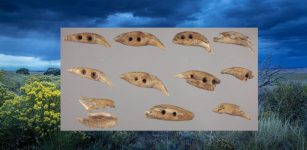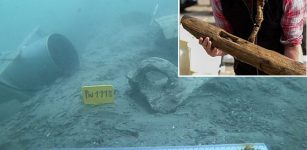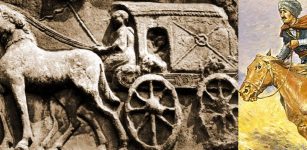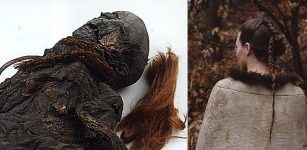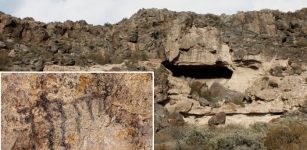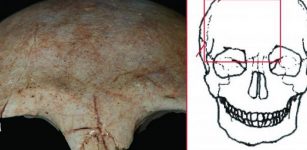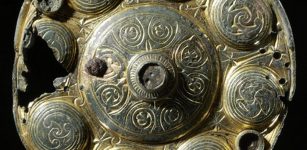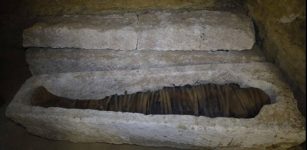Scythian Gold-Plated Sword ‘Akinakes’ Unearthed In Southern Ukraine
Conny Waters - AncientPages.com - An impressive discovery in the form of an intact grave of a Scythian warrior has been reported from the excavation site at Mount Mamai burial grounds in Zaporizhzhia Oblast in southern Ukraine.
 Akinakes is a short Scythian sword. Image credit: istpravda.com.ua
Akinakes is a short Scythian sword. Image credit: istpravda.com.ua
Archaeologists came across a trench with remains of animal bones and small fragments of amphorae. These constitute clear signs of a mourning celebration characteristic of the Scythians and other ancient cultures.
Further excavation revealed two graves – a larger central burial pit and a smaller one. At first, the archeological team decided to clear the smaller one. It took almost three days, reports Euromaidan Press.
While dusting and cleaning the contours of the pit, the archaeologists came across a rare gray clay amphora, and a skeleton, which belonged to a young man aged 18-20 years, probably a Scythian horseman and warrior.
 Akinakes - sword) is decorated with gold covers, leaf sleeves, crosshairs, and a cap for the edge. Image credit: istpravda.com.ua
Akinakes - sword) is decorated with gold covers, leaf sleeves, crosshairs, and a cap for the edge. Image credit: istpravda.com.ua
The archeologists also discovered an iron ax, bronze and bone arrows, and bridle buckles. The most interesting artifact is a gold-plated akinakes (Scythian dagger/short sword) with a leaf-ribbed grip, a cross-guard, and a scabbard for the blade tip.
It is worth noting that akinakes weapon, which was also used by armed Sarmatian women, was unearthed in a large number in excavated Sarmatian military burials.
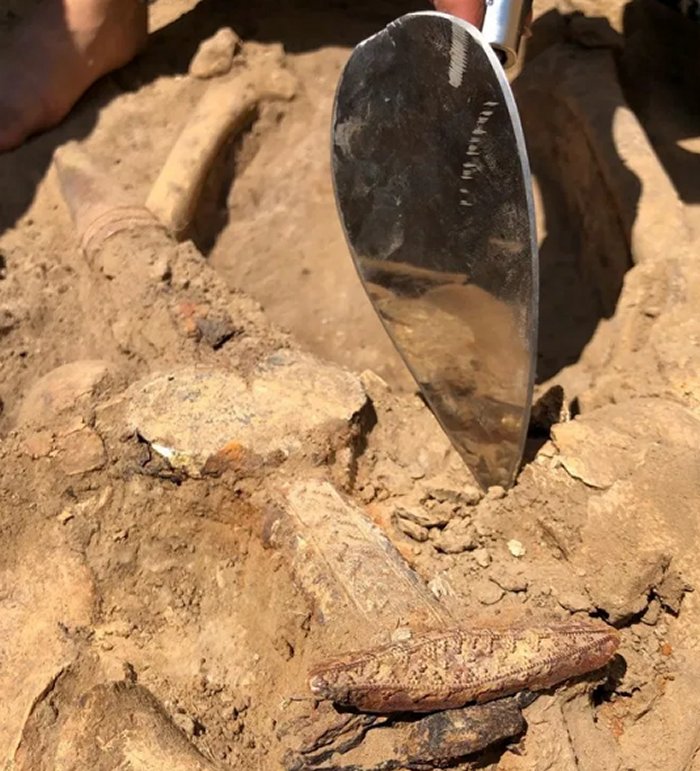 source: Euromaidan Press
source: Euromaidan Press
Not only had the young warrior been buried together with his weapons, but also with some ornaments; the archeological team found beads made of glass paste, a red deer tooth necklace, a gold earring and a gold pendant with chalk inlay.
 Gold-plated akinakes (Scythian dagger/short sword) with a leaf-ribbed grip, a cross-guard and a scabbard for the blade tip. Image credit: istpravda.com.ua via Euromaidan Press
Gold-plated akinakes (Scythian dagger/short sword) with a leaf-ribbed grip, a cross-guard and a scabbard for the blade tip. Image credit: istpravda.com.ua via Euromaidan Press
According to archaeologists working in the area, this grave was adjacent to another, much larger tomb, which had been looted some time ago. We found an arrow tip and bone fragments. An elderly man had been buried here. It’s quite possible that this 18-20-year-old warrior could have been escorting a prominent leader.
Not only is the dig important because of its ancient treasures and weapons, but it also brings more specific information on the dating of Scythian findings in the Mount Mamai area. Experts date this burial site further back in time – from the 6th century B.C., whereas previous Scythian findings were dated from the 4th-3rd century B.C.
For some time, the excavations' work was kept secret as experts and researchers restored artifacts and conducted further studies. On September 26, the heads of the archaeological expedition of the Zaporizhzhia National University, Hennadiy Toshchev and Svitlana Andrukh held a press conference to explain the Scythian burial grounds.
The artifacts will be stored in the Museum of Local History in Kamianets-Dniprovsky.
The Scythians were a nomadic Indo-European people, of Eastern European origin occupying a geological band from Eastern Europe through to the grasslands above China; they shared a common artistic, cultural, & economic base.
Written by Conny Waters - AncientPages.com Staff Writer


